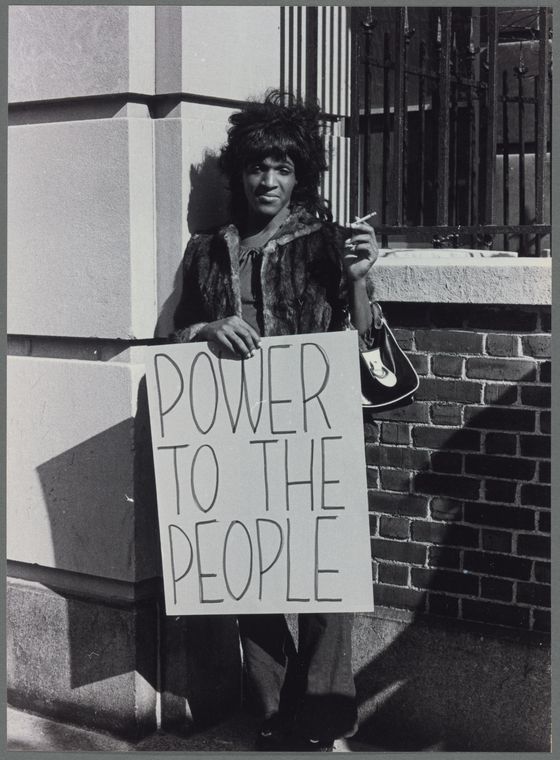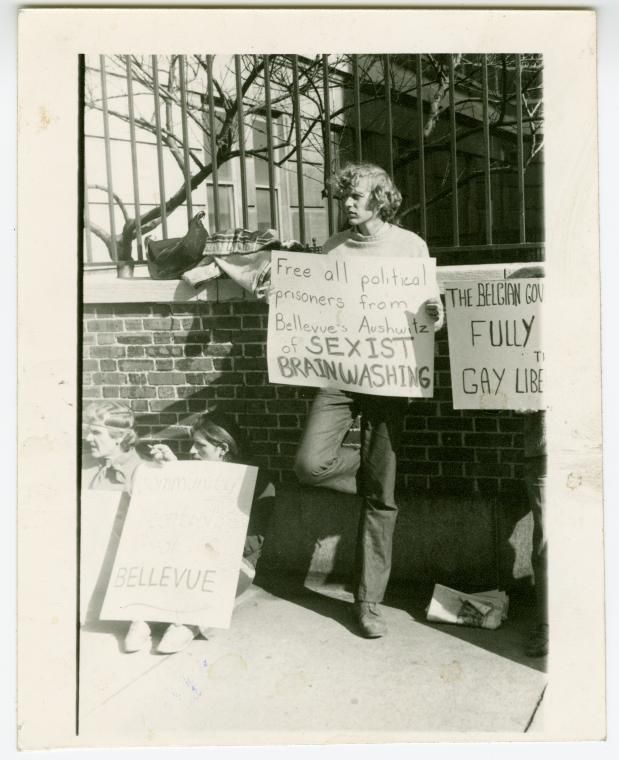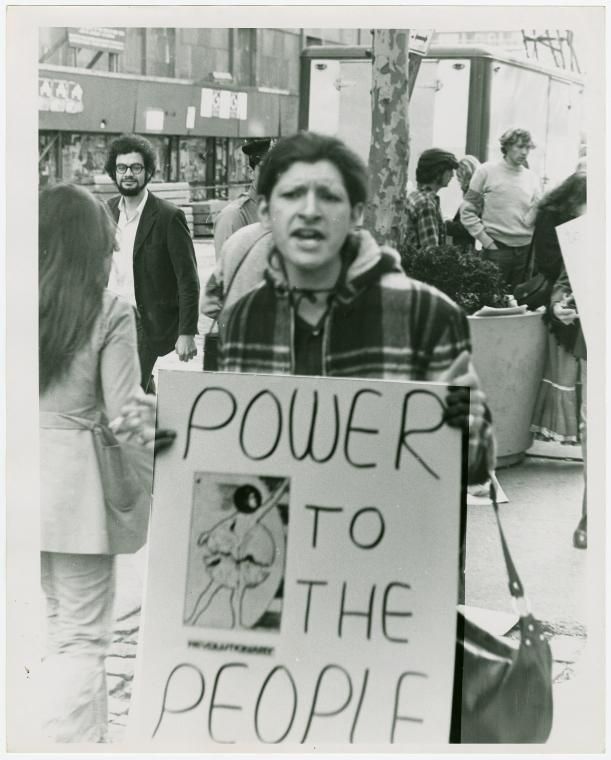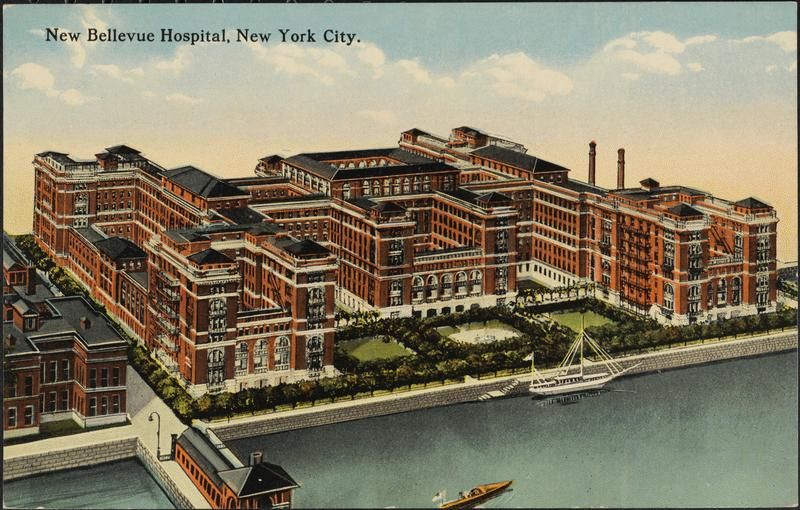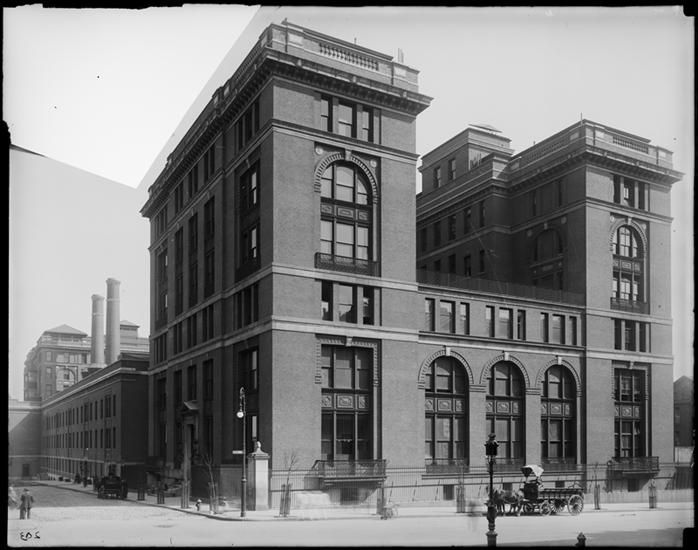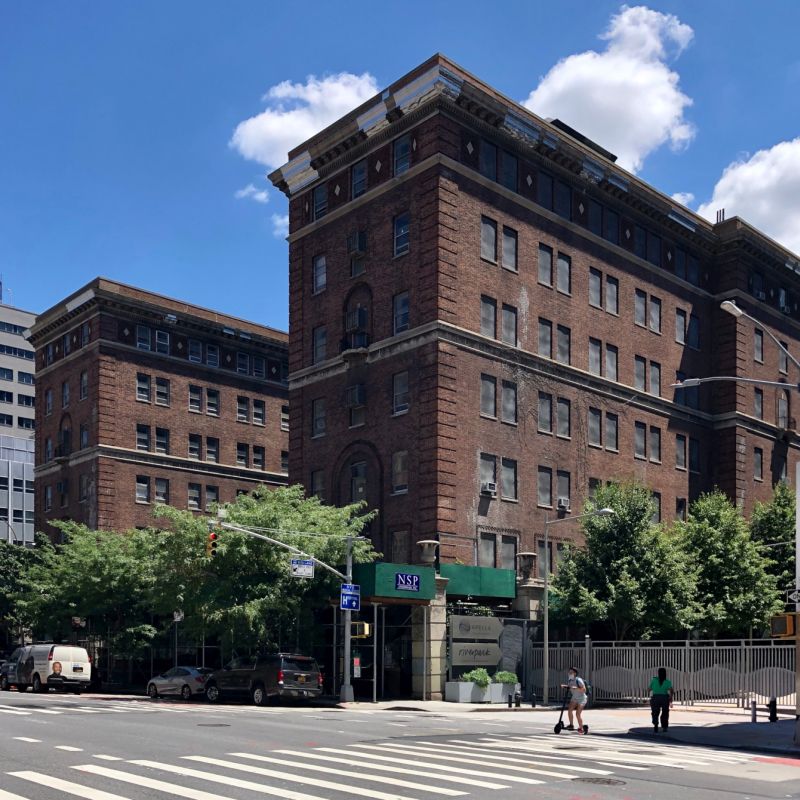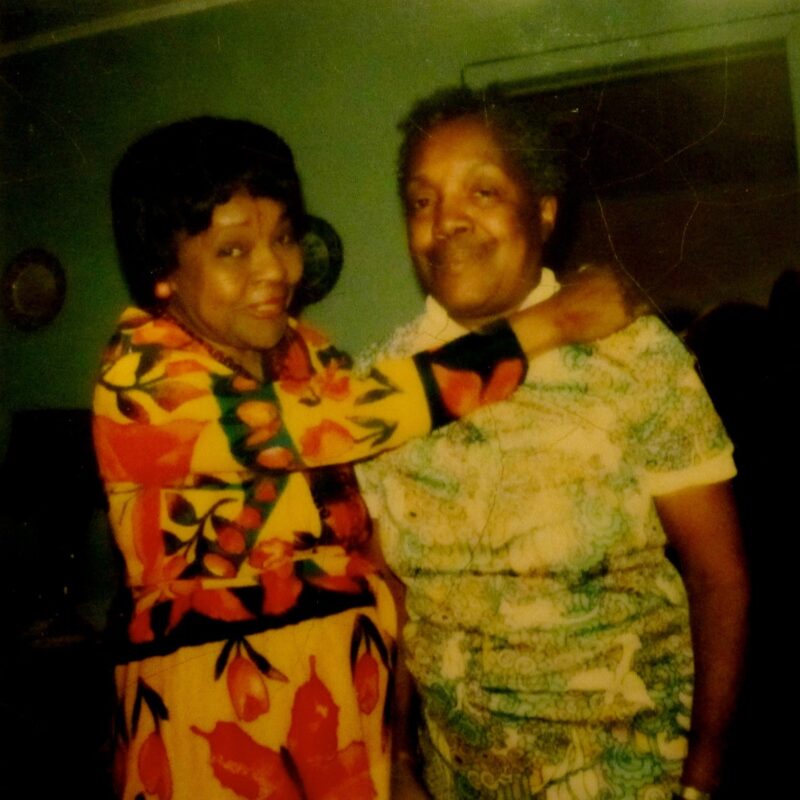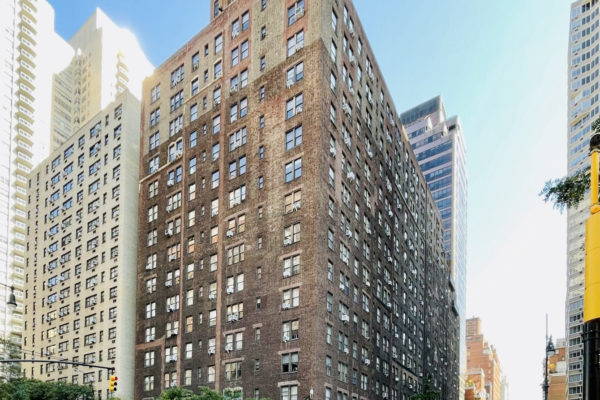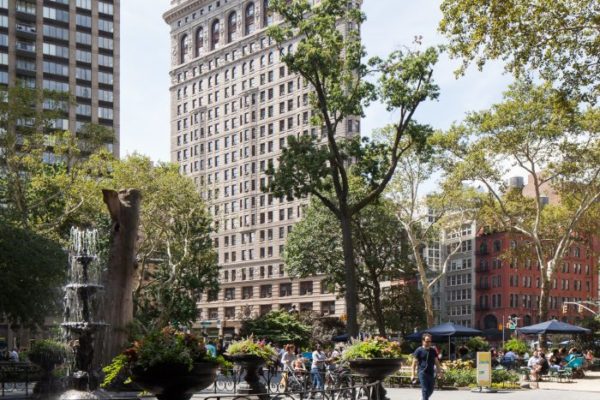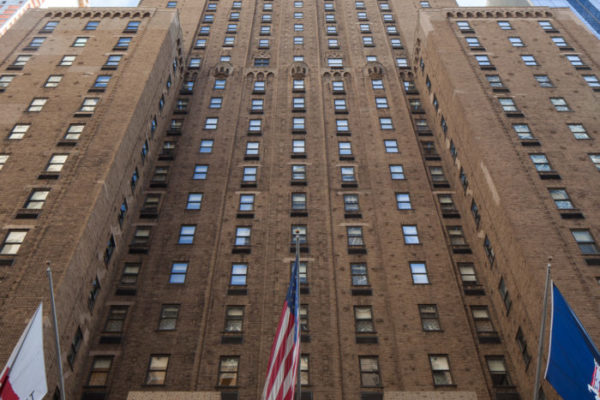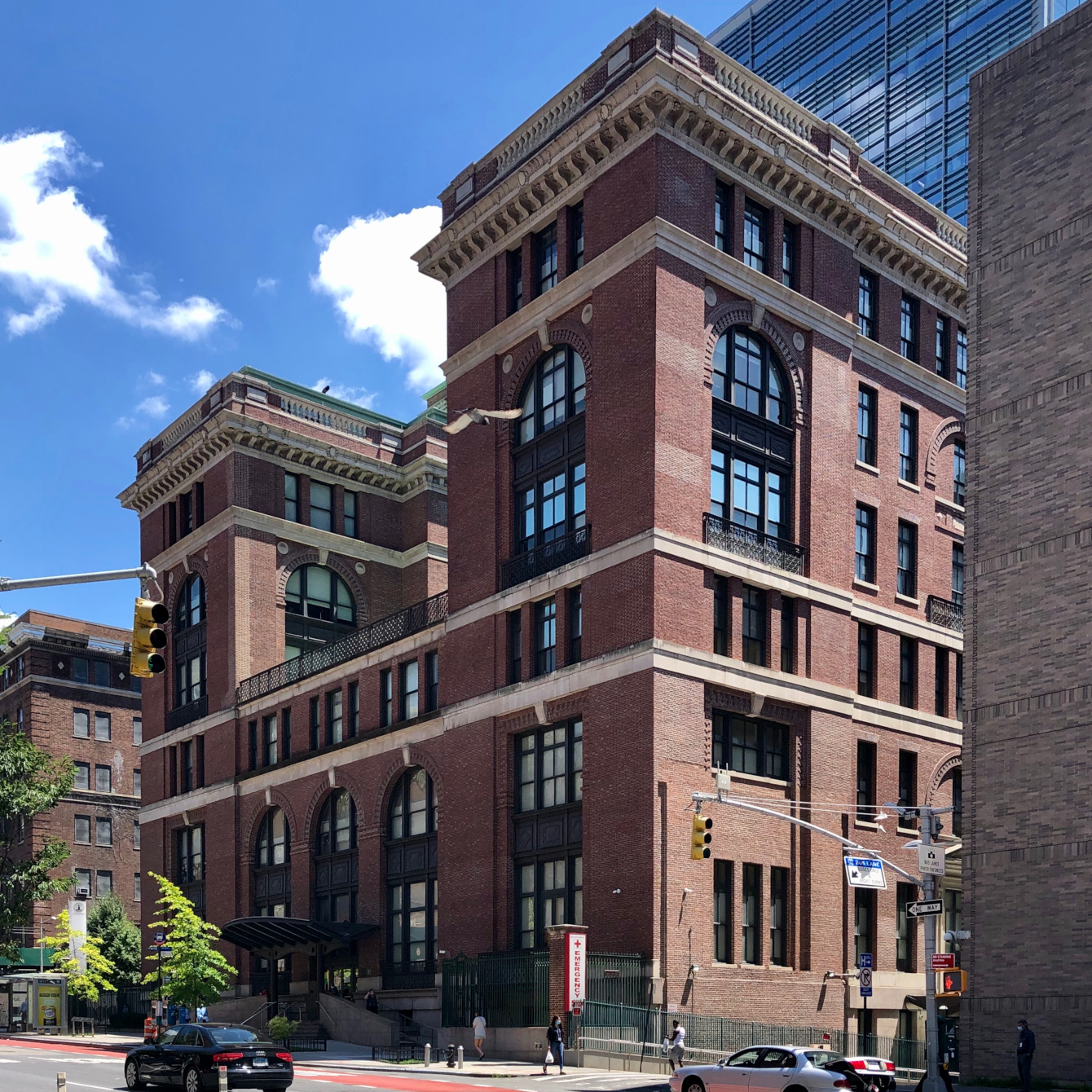
Bellevue Hospital
overview
From the 1930s to the 1970s, for LGBT and especially trans people, Bellevue Hospital was synonymous with medical experimentation and involuntary incarceration.
In 1970, the Gay Liberation Front sponsored a protest outside the hospital to bring attention to Bellevue’s long history of mistreatment of LGBT people.
On the Map
VIEW The Full MapHistory
Bellevue Hospital, one of America’s largest public hospitals, began as an almshouse in 1736. Historically, Bellevue received renown as the city’s primary hospital that admitted every person in need of its services, and was a last resort for the city’s poor and those who might be refused treatment elsewhere. By the early 20th century, as the population of New York City ballooned, Bellevue was in need of a new facility. Between 1906 and 1930, the prominent firm of McKim, Mead & White was the lead architect in the design of new buildings for the hospital grounds at 462 First Avenue, between East 25th and East 30th Streets. This included the opening of psychiatric wards, located in the north end of the complex, in 1931.
Bellevue soon developed a reputation for perpetuating medical cruelties against LGBT patients, including children that doctors identified as LGBT. Beginning in 1935, the psychiatrist Lauretta Bender, who worked in the Children’s Services division of Bellevue Hospital, conducted experiments on 38 children who she claimed had “atypical sexual experiences” and suffered from “problems of masculinity and femininity.” Bender promoted electroconvulsive and insulin shock therapy on these children.
That attitude of experimentation toward LGBT people permeated the hospital. For LGBT people caught up in the carceral system, a visit to Bellevue was more or less mandatory. In New York, anyone convicted of felony sex crimes—a category that included consensual same-sex intercourse—was forced to undergo a psychiatric evaluation at Bellevue. From there, they were subject to a range of cruel treatments. Lou Reed, guitarist from The Velvet Underground, was given electroconvulsive therapy (ECT) at Bellevue as an adolescent, possibly for homosexual tendencies. Allen Ginsberg, who was committed to Bellevue in 1949, referenced the hospital in his iconic 1956 poem “Howl.”
Even LGBT people who checked into Bellevue for other reasons could find themselves the subject of brutal experimentation. Morgan Ahern, a lesbian activist, recalled in 1983 how she was committed to Bellevue for schizophrenia years earlier. When nurses discovered she was a lesbian, they “charted” her sexual identity, Ahern wrote later, and administered genital shocks to cure her.
In 1970, a Black trans woman who went by the name Chris Thompson checked into Bellevue, seeking treatment for asthma. Instead, the staff fixated on Thompson’s cross-dressing. They transferred her to the hospital’s psychiatric wing, where she was housed in the men’s unit. “I feel that I am a prisoner and have been mistreated,” Thompson told the trans activist Sylvia Rivera and the gay journalist Arthur Bell, who interviewed her from Bellevue. Thompson endured slurs and cruel commentary about her desire to live as a woman. The staff made her sleep in the hallway. When Thompson asked to leave the hospital, her doctor replied, “We can’t let you out by yourself.”
Thompson’s experience galvanized Rivera and Marsha P. Johnson, founders of the newly formed organization Street Transvestite Action Revolutionaries (STAR). On October 5, 1970, outside Bellevue, the Gay Liberation Front (GLF) sponsored a demonstration, which included members of STAR and Gay Student Liberation of NYU. Protestors held signs that demanded “an end to the oppression of homosexuals and all people in Bellevue Psychiatric Prison” and the “end of shock treatment, drugs, imprisonment, and metal poisoning” at Bellevue. Johnson, who herself had also been briefly incarcerated in the psychiatric wing of Bellevue, held up a “Power to the People” sign.
By the time the city closed large parts of the Bellevue psychiatric hospital in 1984, Bellevue had taken on a new meaning for the LGBT community. Thousands of people across the city were sick or dying of AIDS, and for people with AIDS without financial resources, for better or worse, Bellevue was one of the few places, along with St. Vincent’s Hospital Manhattan, where they could turn. In 1985, Bellevue registered more than 400 AIDS patients—the most of any hospital in the country at the time.
Entry by Michael Waters, project consultant (July 2023).
NOTE: Names above in bold indicate LGBT people.
Building Information
- Architect or Builder: McKim, Mead & White
- Year Built: 1906-1930
Sources
Alexandra Hilton, “Building Histories, The Bellevue Psychopathic Hospital and the Rivington Street Bath,” NYC Department of Records & Information Services, April 16, 2021, bit.ly/3U0XEl5.
Jennifer Terry, An American Obsession: Science, Medicine, and Homosexuality in Modern Society (Chicago: University of Chicago Press, 1999), 189.
Julian Honkasalo, “When boys will not be boys: American eugenics and the formation of gender nonconformity as psychopathology,” International Journal for Masculinity Studies, December 2016.
“Out of the Closets and Into the Subcellar,” RAT, October 6, 1970.
Peter R. Breggin, “Electroshock: scientific, ethical, and political issues,” International Journal of Risk & Safety in Medicine, 1998, bit.ly/3ZG8dLP.
Rebekkah Mulholland (2020), “‘Historical Erasure Is Violence’”: The Lives and Experiences of Transgender Women and Gender Nonconforming Women of Color in the 19th and 20th Century,” [Doctoral Dissertation, University of Memphis], bit.ly/3zdWglw.
Samuel Galen Ng, “Trans Power! Sylvia Lee Rivera’s STAR and the Black Panther Party,” Left History, 2013, bit.ly/3JX0Ppq.
“Suicide Prevention,” Homosexuals Intransigent!, iss. 6, 1972.
“Transvestite and Transsexual Liberation,” Gay Dealer: The Rage of Philadelphia, October 1970.
William A. Nolen, “Bellevue No One Was Ever Turned Away,” American Heritage, vol. 38, iss. 2, February/March 1987, bit.ly/3WfkG8O.
Do you have more information about this site?
This project is enriched by your participation! Do you have your own images of this site? Or a story to share? Would you like to suggest a different historic site?
